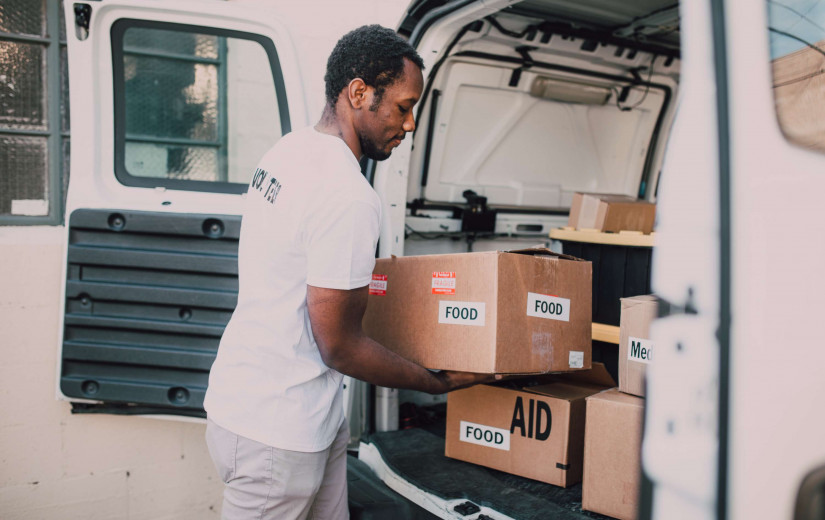SNAP: Helping Solve the Battle Against Hunger
SNAP, also referred to as the Supplemental Nutrition Assistance Program, helps millions of struggling Americans afford nutritious food each month. Low-income families with elderly members, disabled individuals, or small children make up the majority of SNAP recipients. The federal government covers the cost of providing SNAP benefits while states help offset the cost by handling the fees behind administering and operating the program.
Who Is Eligble to Receive SNAP Benefits?
The federal government determines the base benefit levels and qualifications for the program. Individual states are allowed to adjust some of the criteria such as how expensive of a vehicle an applicant can own while still receiving benefits. To be eligible for SNAP benefits, a family or individual is required to meet certain criteria:
- The total gross monthly income of the household must not exceed the federal poverty by 130 percent
- Once necessary deductions are considered, the total net monthly income of the house must not exceed the federal poverty level
- Assets of household members, such as checking or savings accounts, must be under a set limit
Families with elderly or disabled members are allowed to have higher assets and are only required to meet the net income test. The United States Food and Nutrition Service website lists the current guidelines for income and assets.
Who Is Not Eligible for SNAP Benefits?
Regardless of their assets or income, the following individuals do not qualify to receive SNAP benefits:
- Workers on strike
- Almost all college students
- Immigrants that are undocumented
- A portion of legal immigrants
- Work Requirement for SNAP
Any able-bodied adult without children is usually limited to three months of unemployment before they no longer qualify for SNAP. The exception is if they are currently undertaking a job training program or working at least 20 hours per week. During periods of particularly high unemployment rates, states can choose to request a waiver from the United States Department of Labor that extends the benefit period.
What Is the Maximum Amount of SNAP Benefits a Household Can Receive?
As of September 2017, the maximum amount of benefits can be anywhere from $142 for an individual to a little over $1,160 for families of eight. The amount of SNAP benefits received is based on the size of the household and the income. It assumes that around 30 percent of the net income of the family will be spent on food.
The benefit formula is based on the difference between 30 percent of the family's contribution and the cost of a nutritious diet. The Thrifty Food Plan, set by the United States Department of Agriculture, defines what a nutritious diet consists of. For instance, a household of three members with a net income of $800 per month is expected to put $240 toward food. It is estimated by the Thrifty Food Plan that it would take $511 per month to obtain a nutritious diet. This means the family would be eligible for $271 of SNAP benefits per month.
How Individuals and Families Can Use SNAP Benefits
SNAP benefits are only allowed to be used for food that is to be consumed at home, as set by the Food and Nutrition Act of 2008. Seeds and plants to grow produce are also eligible for purchase. Examples of eligible foods include cereals, bread, fruits, vegetables, dairy products, and meat.
Benefits are not allowed to be used on alcohol, vitamins, medicines, nonfood items, and tobacco products. Generally, SNAP benefits are not eligible to be used on foods intended to be eaten at a store or hot foods. Some restaurants may have the authorization to accept SNAP benefits for providing low-cost meals to disabled, homeless, or elderly individuals.
SNAP benefits are also allowed to be used on luxury or junk food items. For instance, steak or cookies would both be allowed to be purchased with benefits. Although there is a great deal of debate surrounding this subject, Congress determined that limiting these types of purchases would require too much cost and effort to enforce.
How to Apply for SNAP Benefits
The application process varies from state to state. Contact your state's SNAP hotline number if you are interested.
Who Is Eligble to Receive SNAP Benefits?
The federal government determines the base benefit levels and qualifications for the program. Individual states are allowed to adjust some of the criteria such as how expensive of a vehicle an applicant can own while still receiving benefits. To be eligible for SNAP benefits, a family or individual is required to meet certain criteria:
- The total gross monthly income of the household must not exceed the federal poverty by 130 percent
- Once necessary deductions are considered, the total net monthly income of the house must not exceed the federal poverty level
- Assets of household members, such as checking or savings accounts, must be under a set limit
Families with elderly or disabled members are allowed to have higher assets and are only required to meet the net income test. The United States Food and Nutrition Service website lists the current guidelines for income and assets.
Who Is Not Eligible for SNAP Benefits?
Regardless of their assets or income, the following individuals do not qualify to receive SNAP benefits:
- Workers on strike
- Almost all college students
- Immigrants that are undocumented
- A portion of legal immigrants
- Work Requirement for SNAP
Any able-bodied adult without children is usually limited to three months of unemployment before they no longer qualify for SNAP. The exception is if they are currently undertaking a job training program or working at least 20 hours per week. During periods of particularly high unemployment rates, states can choose to request a waiver from the United States Department of Labor that extends the benefit period.
What Is the Maximum Amount of SNAP Benefits a Household Can Receive?
As of September 2017, the maximum amount of benefits can be anywhere from $142 for an individual to a little over $1,160 for families of eight. The amount of SNAP benefits received is based on the size of the household and the income. It assumes that around 30 percent of the net income of the family will be spent on food.
The benefit formula is based on the difference between 30 percent of the family's contribution and the cost of a nutritious diet. The Thrifty Food Plan, set by the United States Department of Agriculture, defines what a nutritious diet consists of. For instance, a household of three members with a net income of $800 per month is expected to put $240 toward food. It is estimated by the Thrifty Food Plan that it would take $511 per month to obtain a nutritious diet. This means the family would be eligible for $271 of SNAP benefits per month.
How Individuals and Families Can Use SNAP Benefits
SNAP benefits are only allowed to be used for food that is to be consumed at home, as set by the Food and Nutrition Act of 2008. Seeds and plants to grow produce are also eligible for purchase. Examples of eligible foods include cereals, bread, fruits, vegetables, dairy products, and meat.
Benefits are not allowed to be used on alcohol, vitamins, medicines, nonfood items, and tobacco products. Generally, SNAP benefits are not eligible to be used on foods intended to be eaten at a store or hot foods. Some restaurants may have the authorization to accept SNAP benefits for providing low-cost meals to disabled, homeless, or elderly individuals.
SNAP benefits are also allowed to be used on luxury or junk food items. For instance, steak or cookies would both be allowed to be purchased with benefits. Although there is a great deal of debate surrounding this subject, Congress determined that limiting these types of purchases would require too much cost and effort to enforce.
How to Apply for SNAP Benefits
The application process varies from state to state. Contact your state's SNAP hotline number if you are interested.

















